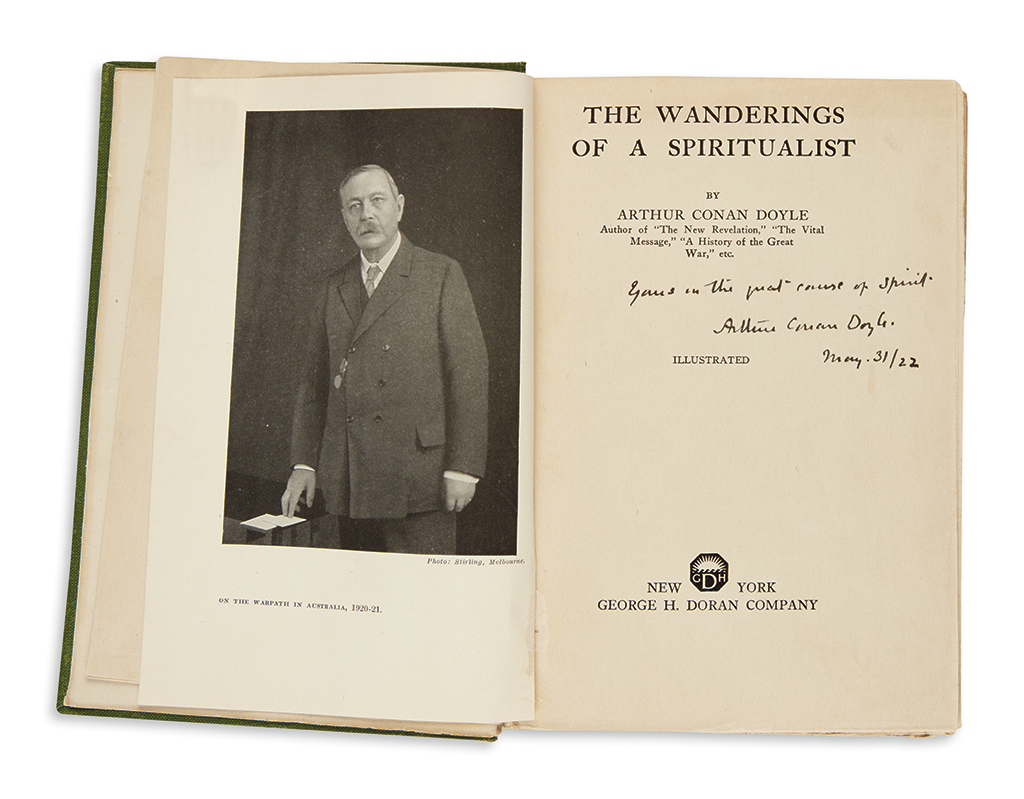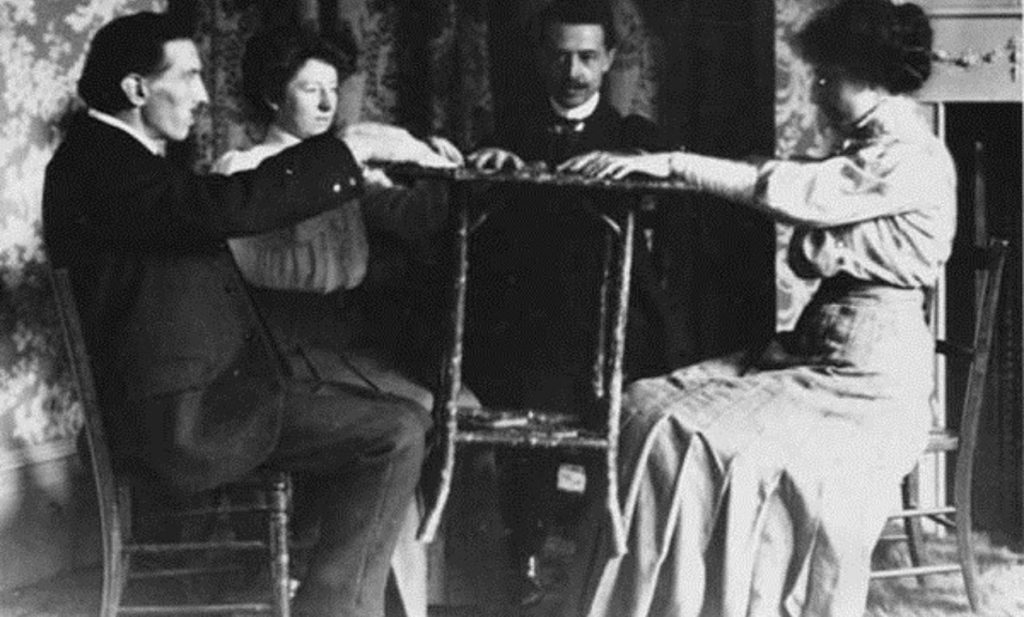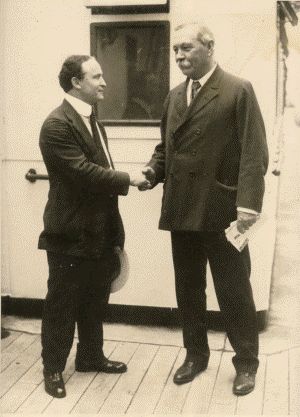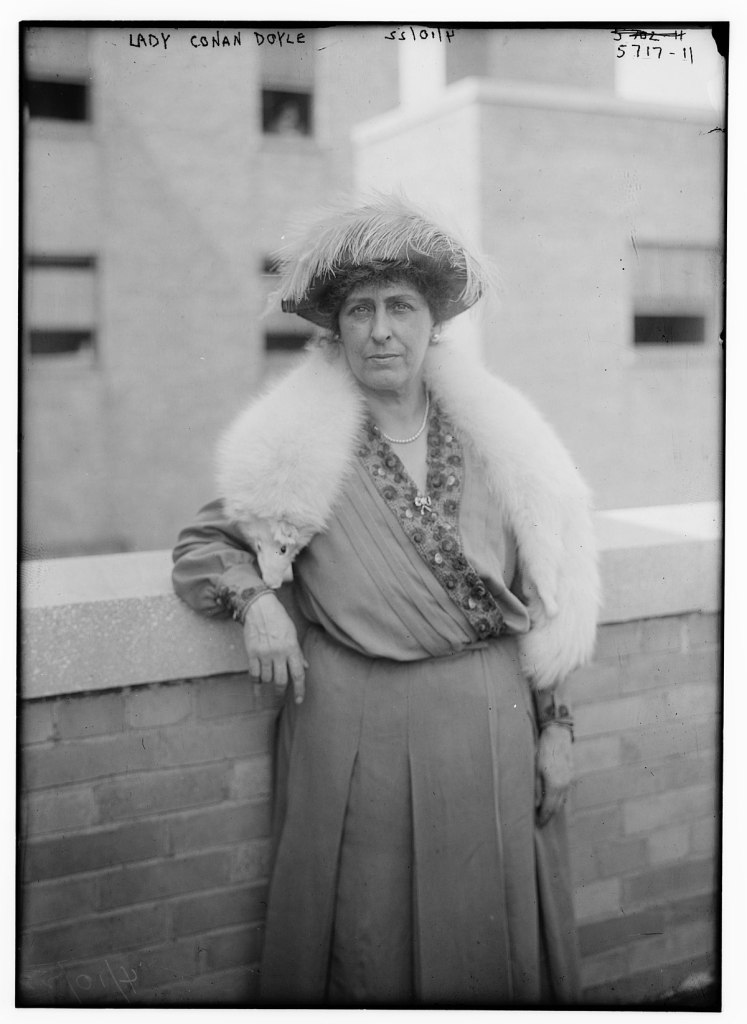What happened after that 1922 séance with Lady Doyle? Houdini initially kept his opinions to himself – probably not wanting to embarrass his friends – while the Doyles publicly claimed they had successfully communicated with the magician’s mother. It wasn’t until a little while later that Houdini publicly went on record to say he had never seen anything from any medium to convince him the dead could communicate with the living. This not only hurt Lady Doyle’s feelings, it greatly angered Sir Arthur.
Further fanning the flames, that same year Scientific American magazine offered $5,000 to anyone who could scientifically prove the existence of ghosts. Being on the magazine’s panel of judges, Houdini passionately set out to debunk mediums by attending seances in disguise and lecturing on the topic, while exposing props used by mediums during their sessions. In 1926, he even testified before Congress to get a bill passed that would regulate mediums and fortune tellers.

To be clear, mediums and clairvoyants were making a killing during the 1920s off desperate people – rich and poor – who were anxious to communicate with their dearly departed, and they didn’t take kindly to Houdini raining on their money parade. In fact, in 1924 Boston medium Mina “Margery” Crandon, who was one of those exposed by Houdini, put a “curse” on him claiming he would be dead within the year as punishment for questioning the validity of her powers. Said Houdini, “The preposterous and malignant curse which has been put on me in Boston is not going to kill me. But here is always the chance that a coincidence will seem to prove the working of the curse.” [“‘Evil Spirits’ Put Curse Upon Harry Houdini.” Pittsburgh Telegraph, 22 December 1924]
Houdini’s words couldn’t have been more prophetic. On October 11, 1926 Houdini broke his ankle during a show. Ever the showman, he refused to get medical attention choosing instead to continue his travels to Montreal where he was scheduled to speak on the fakery of mediums. While in Montreal Jocelyn Gordon Whitehead, a student at McGill University, asked Houdini if he could punch him, as the illusionist was famous for withstanding a punch to the gut. Of course, this required physical preparation by Houdini – tensing his abdomen muscles, etc. – but without warning, Whitehead punched Houdini (reportedly more than once) which sent the magician writhing to the floor in pain. Again, rather than seek medical attention, Houdini soldiered on with his shows until his wife, Bess convinced him to go to the hospital once her husband developed a 104 degree fever. Doctors discovered his appendix had ruptured and immediately had it surgically removed, but by then it was too late. The seemingly “undefeatable” Harry Houdini died of sepsis on Halloween, 1926.
Having an appendix ruptured due to body blows is extremely rare. Many believed Houdini may have already been suffering from appendicitis which was made worse by Whitehead’s punches. Others believed he was poisoned by his many enemies while in the hospital. What was the true reason? We’ll never know for sure since an autopsy was never performed. Interestingly enough, the Houdinis continued their anti-medium crusade even after Harry’s death as the couple had agreed that, should one of them die before the other, the deceased one would communicate with the living partner using a special, predetermined code. After ten years of seances to communicate with her husband, Bess Houdini finally gave up: no medium could ever crack the couple’s code.

And what about Sir Arthur Conan Doyle? What did he have to say after his once good friend’s death? Both he and Lady Doyle claimed that Houdini’s mother had predicted her son would die young when she supposedly made contact during that séance in 1922, but the Doyles had chosen not pass this message along to the escape artist. There is no concrete evidence of such a message having been recorded. Conan Doyle did say, “We were great friends. He told me much in confidence, but never secrets regarding his tricks. How he did them I do not know. We agreed upon everything excepting spiritualism.” [The Associated Press, “Conan Doyle Mourns Houdini.” The Salt Lake Tribune, 2 November 1926, p.1]
POSTSCRIPT

Purportedly, people still hold seances on Halloween night near where Harry Houdini was living in Los Angeles. The property is referred to as “Houdini’s Estate” even though the property had been owned by one of his friends, Ralf Walker not Houdini. Located on Laurel Canyon Boulevard, the original mansion and guest house, where the Houdinis likely stayed, burned down in 1959 leaving what eventually became overgrown ruins. Attracted by reported sightings of Houdini’s ghost, I made a visit to the site in 1990 with a group of friends. We didn’t see Houdini’s ghost, but we did find burned out candles and the like, evidence that the magician’s admirers were still trying to “make contact.” The property was sold in 1997 and the new owner cleaned up all the debris and began a restoration. The property has been sold a few more times since then and can now be rented for film shoots and private events: The Houdini Estate.

Now you may be thinking, if Houdini, the unbeliever didn’t make contact, what about Sir Arthur Conan Doyle? Did he ever manifest himself during a séance? Mediums claimed Doyle made contact as early as one week after his death in 1930. Four years later in a séance attended by nearly 600 people in London, Doyle reportedly made contact again, and this time is was supposedly recorded on 26 acetate discs. “Doyle’s spirit” was recorded saying, “Take care of my boys and my good wife, Jean.” You can listen to “Doyle’s spirit” here: https://www.youtube.com/watch?v=CptSgFovXHw&t=2s
[Are you curious to attend a séance? Villa Finale will be hosting “Springing Into Spiritualism,” on March 31, 2023 to mark the 175th anniversary of the first ever séance led by our friends at The Austin Séance (ticket information here: https://app.etickets.to/buy/?e=19333&fbclid=IwAR3ez4KLLYJuw1jZqjQZ2uJNQ0_x4UT5JJxd4-SX5fwQhwS_rjDa1Lc5F-0).
If we should happen to sell out by the time this post is published, we will be hosting another séance in the fall. Sign up for our email list to stay informed about all our events and programs!]
FURTHER SOURCES
Harry Houdini’s Spiritual Feud with Arthur Conan Doyle
When Sir Arthur Conan Doyle (Maybe) Spoke with the Dead














